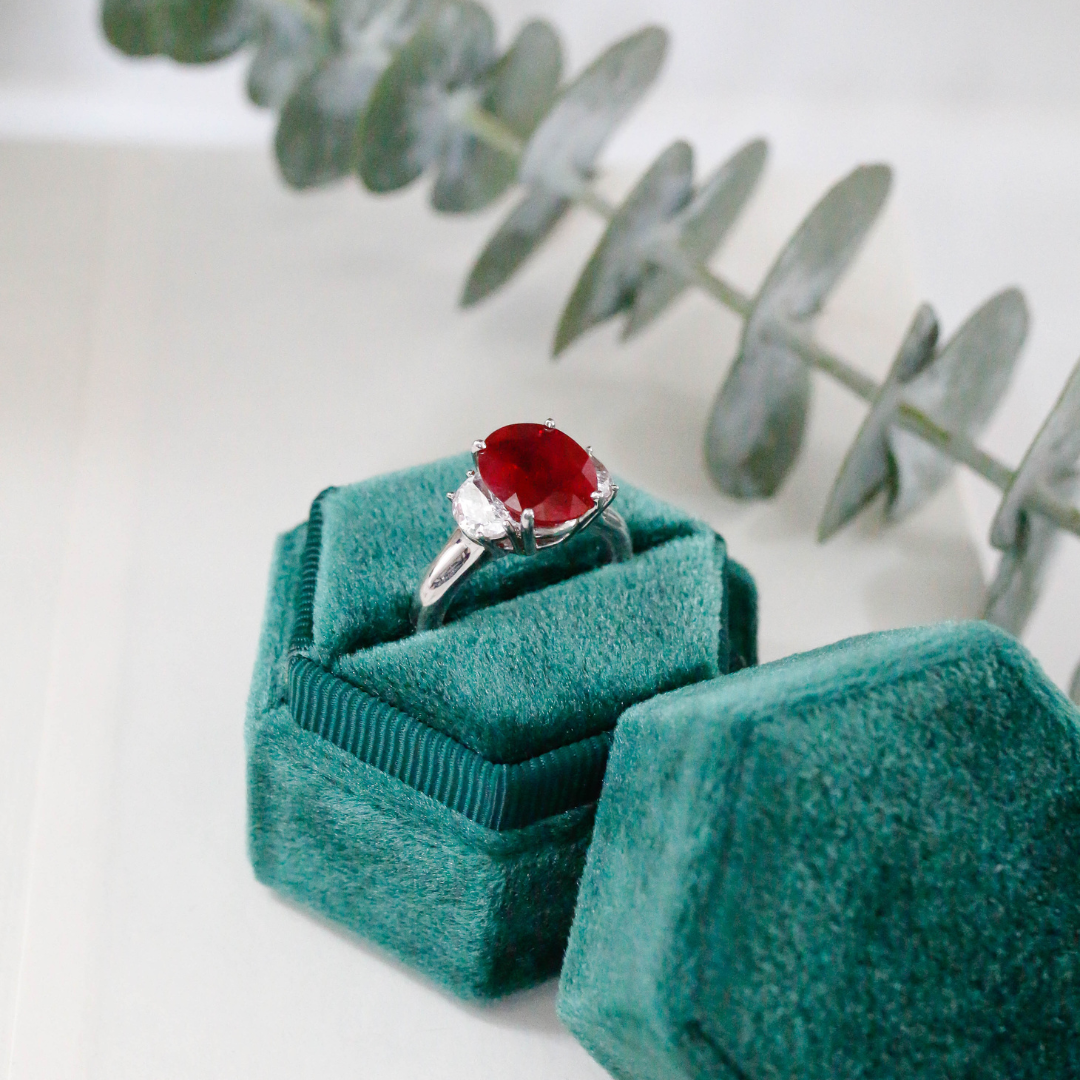
If you’re looking for a gemstone that is not only time-tested, but represents the passion and commitment in a relationship, the red ruby should be your first choice. If you thought all rubies were red, you might be surprised to know there are pinkish and purplish-pink stones that are also identified as rubies because they share the same chromium content. What is chromium, you ask? Chromium is the trace element that determines the strength of red color in a ruby. The more chromium, the more intense red will be present. Keep reading to discover things you may or may not already know about this enchanting jewel!

The History and Lore
Historically speaking, the ruby is the most significant gemstone. Derived from the Latin word, ruber, meaning red, the ruby was mentioned as early as the first century when scholars noted it for its density and resilience. Ancient warriors adorned their armor with rubies because they believed they provided safety in battle. Other cultures used them to protect against misfortune, inflammation, and illness. Ancient Hindus believed that offering rubies to the gods granted rebirth and the Bible talks about rubies as being the standard for beauty and wisdom. Rubies gained popularity in medieval Europe as the symbol for health, wealth and wisdom in love. Today, the ruby has not lost its foothold in the cultural desire to demonstrate wealth and passion. The ruby is known as July’s birthstone and represents the courageous, happy, and passionate characteristics of those born in the seventh month of the year.
The Value and Worth
Color
As previously mentioned, it is the chromium content that determines the color of a ruby.
This content will vary based on the location of the geological formation where the ruby was produced. This is why terms like "Burmese" (Myanmar) or "Thai" (Thailand) are sometimes used to describe the color of stones from those locations. (However, color isn't always an indication of origin). Because the Burmese has more chromium, it has darker, maroon hues, making it one the most popular. Color saturation ranges from vivid to strong, fair, medium, and weak. Top quality rubies are always graded as ‘vivid.
Clarity
Just as diamonds are graded on a scale of inclusions, so the clarity of the ruby is also graded.
On a scale of VVS (very, very small inclusions) to I3 (included), VVS rubies indicate the rarest and most coveted, while I3 are not. Inclusions have a huge effect on the color; no inclusions mean a more vivid and clear ruby and as already mentioned, top quality rubies are always “vivid”.
Cut
The natural ruby owes its best beauty to the way it is cut. Since it is color that has the biggest effect on quality, (which equals price, of course) gem cutters will emphasize the cut that influences the hue of ruby and maximizes its brilliance. It’s also about finding a balance of minimizing visibility of inclusions while maximizing final weight of stone. Generally speaking, there are four ways a ruby is cut: brilliant cut, step cut, mixed cut, cabochon cut.
How to Tell if a Ruby is Real
As a consumer, beware being shown a red gemstone that is actually a lab-grown ruby, which more often than not, is completely inclusion free, giving them an ‘almost perfect’ look. The first thing you can do is gauge its color: synthetic rubies are more often a lighter red, while natural feature a deep red color. Since the ruby has a hardness second only to the diamond, it is possible to perform a “rub test” to determine its authenticity. If you are not able to perform one, you should seek an only appraisal certificate from a reputable professional jeweler.

